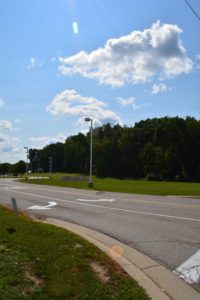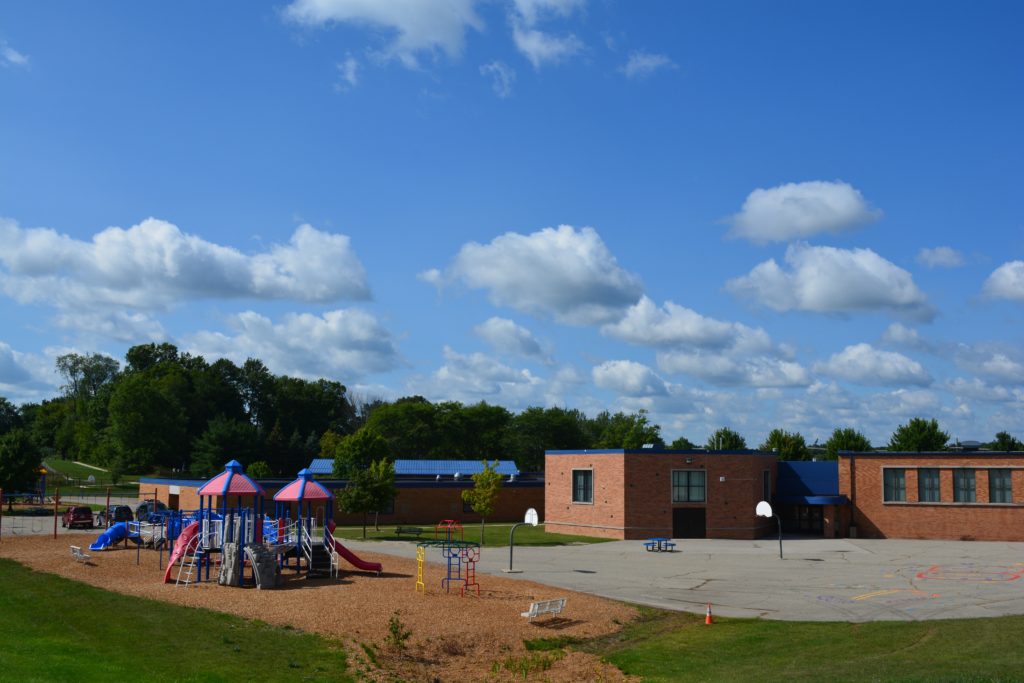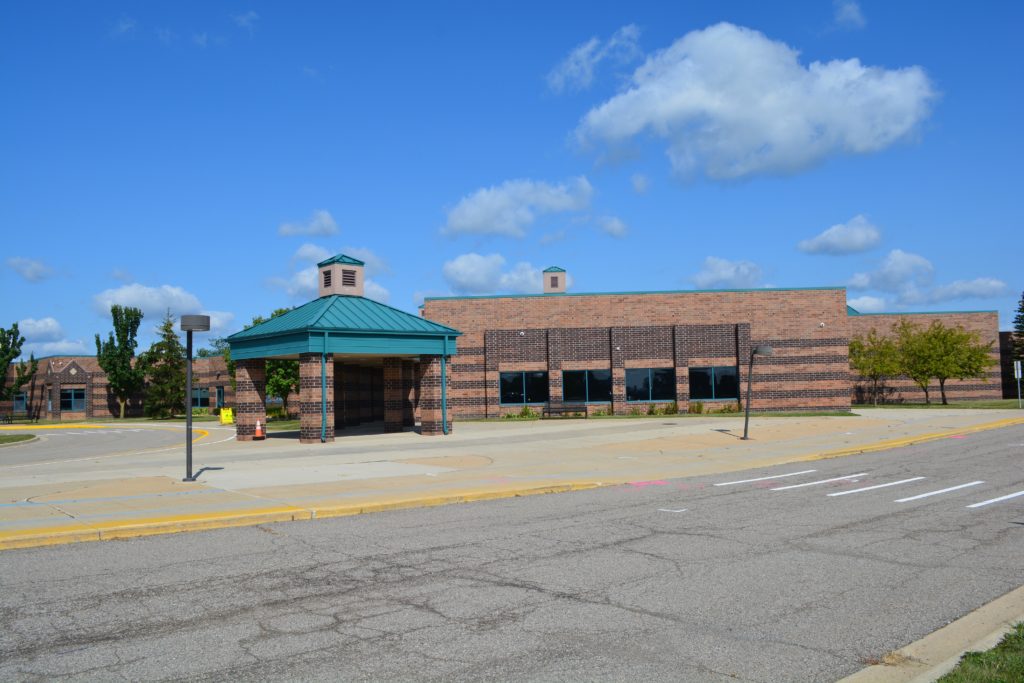Nearly 70% of voters approve a bond that will generate $71.7 million for the school district over the next 10 years
By Tessa Kipke and Heather Brouwer
In the coming years, Dexter High School students can expect many changes, both big and small, in and around our school.
Because of the bond passed on August 8th that will bring $71.7 million to the school district to use over the next 10 years, the Dexter school district is embarking on a series of much-needed projects to improve our schools, all the way from Bates to the high school. The bond will pay for repairs and maintenance as well as district-wide renovations, the construction of a new elementary school and athletic fields, new buses, and the periodic replacement of technology.

The good news for DHS students: Many of the minor annoyances that put a damper on the school day (the sinks don’t work, nowhere to fill up your water bottle, the Wi-Fi takes ages to load) are going to be fixed. The bad news: Because good things take time, most of those changes won’t go into effect until next summer or later.
Maintenance at DHS
“You can always count on at least two sinks being broken, even when there are only three sinks in the bathroom,” senior Gabi Fracassi said.
Broken bathroom sinks are thorns in the sides of not only all Dexter High School students, but also of the staff and administration. Of the building’s 333 sinks and faucets, half are nonfunctional. Though broken faucets seem like they ought to be chump change, repairing them on such a large scale will likely cost $70,000-80,000, money the district didn’t have until the bond passed.
During the coming school year, maintenance staff will be installing samples of several different faucets around the building.
“We’ll see which [samples] kind of last, and work out some process with students to see which one [students] like,” superintendent Dr. Chris Timmis.
Next summer, all 166 broken faucets will be replaced by the sample that is selected with the input of the student body, finally guaranteeing that each bathroom will have more than one working sink.
Additionally, the school intends to install and repair drinking fountains throughout the school.
“We did budget to put in drinking fountains… with the water bottle filler,” Timmis said.
So, DHS students will finally be able to fill their water bottles without making a mess and soaking everything in their hands, and getting a drink of water between classes will no longer require an expedition halfway across the school to find the one functional fountain on that floor.
In the next few years, several other minor, less urgent changes will be made to Dexter Community Schools, including replacing all of the carpeting at DHS, renovating “all the locker rooms and bathrooms from fifth grade up,” and building a flexible learning space, or a room that can be used as a classroom, testing space, or presentation hall, attached to the high school. This space will be 5,000 square feet and will help accommodate a growing student body.
“I’m excited about the flexible learning space at the high school because we are going to have this 5,000 square foot thing, and everyone will get to use it,” DHS Principal Kit Moran said. “I’m excited to say ‘Staff, we’re going to build a thing, what do you want to build’ and find out what teachers and kids want. I think it will make coming to school more appetizing.”
The CPA will also be upgraded with the money from the bond in the next few years.
“We want to digitize the facility,” said Timmis, referencing the aging projector that still needs to be rolled onto the stage during presentations and the lack of a professional soundboard. The CPA will get new carpeting and all of the broken seats will be repaired or replaced. And when the light bulbs need to be replaced again, the bond’s plan is to replace them with LEDs.
Finally, 60-70 percent of the furniture in the entire school district will be replaced.
“Some of those desks at Creekside we purchased in the ‘80’s. It’s probably time,” Timmis said. “If you go to Mill Creek, those were purchased with the building – that was ‘95 – so, they are 22 years old. Those things are literally… made out of cement. That’s part of the next phase.”
Upgrades to Technology
Last year, the school district installed a hub so that the tech infrastructure could handle more devices, solving many of the Wi-Fi problems students and staff experienced. But due to the growing population of the Dexter School District, another hub will have to be installed in the next five years in order to maintain a network that can support more than 4,000 devices, so that students and staff can get on the networks with their phones, laptops, and other devices.
There is also a plan in place to cycle out the old projectors.
“We’ll replace them as they go,” Timmis said. “We are finding projectors that fit that mounting that are stronger and brighter.
“We planned for a couple refreshes to cycle and buy all new over the years,” added Timmis in regards to security cameras, laptops, and desktops.
The desktops at DHS, which can be found in the library and in some classrooms, have slowed down noticeably. To counteract this, the technology department replaced the processors, or “guts” of the computers, but as this can only be done once; the bond plans to replace those computers as they begin to slow down and eventually fail.
Improvements in Athletics
In the next year, the baseball and softball fields between Cornerstone, Wylie, and Mill Creek are going to be relocated so that they are closer to the high school. The new elementary school will be built in that space.
The bond also budgeted for the upgrade and renovation of the high school tennis courts.
Swimmers and water polo players will get to look forward to the renovations at the Wylie pool locker rooms, which will be updated. When they’re complete, students will officially be able to say goodbye to slippery floors and dysfunctional showers and sinks.
The bond also sets aside money for smaller fixes at many of the other athletic fields across the district.
However, the biggest change to the athletic fields will be the addition of a new one right next to DHS.
In the coming school year, students will start to see trees being cleared out just southwest of the entrance drive to the high school. This space will be home to a new turf field with lights and seating for a couple hundred people. It will be similar to the Al Ritt field but on a smaller scale.

For many teams, this field will create a dramatic improvement; it has been difficult to book Al Ritt around all of the other teams who need somewhere to practice and play.
The new field, like Al Ritt, will be painted with many different lines for games to accommodate all of the teams that will be able to use it.
It will also be marked for band, so that the Dexter marching band will have a designated spot to practice besides the grassy lot outside the school.
Some students, however, are concerned that the new fields are going to harm the environment.
“The band has been having evening rehearals at the actual football field and rehearsing during school on the grass area by the parking lot for forever,” sophomore band member Alyssa Frost said. “Tearing down forest area to build a marching band practice field is just unnecessary and wrong.”
The best news of all – for everyone but this year’s seniors – is that this is expected to be completed by the fall of 2018.

Changes to Campus
While many residents can be pretty set in their ways here in Dexter, that doesn’t mean ignoring the accommodation needs of our community. And grow Dexter will, with the construction and addition of another elementary school to our district by the fall of 2018.
This will be by far the most drastic and redefining change that Dexter will undergo in the coming year, and it’s more than necessary.
Last year, both Cornerstone and Bates were almost literally overflowing with kids. The buildings were at 106% design capacity, meaning that the number of children in attendance surpassed the number the building was designed to house. Because of this, language teachers at the elementary schools had to wheel their materials around on a cart, as they had no classrooms of their own. Additionally, the Preschool Special Education program that was originally housed at Cornerstone had to be moved to Creekside.
These overcrowded elementary schools and the general upward trend in attendance to Dexter Community Schools brought on the need for a new elementary school, which was highlighted by the school board in their bond proposal.
The school will be built next to Cornerstone and will mirror its image almost exactly – the same blueprints were used – with the addition of one learning pod. The two buildings will even be connected via several flexible learning spaces and will share a kitchen. Ideally, Timmis said, it will be completed by December of 2018.

This would mean that by next fall, all of the K-2 students will be in one place: a mega-school centrally located behind the bus hub.
While many students have fond memories of Bates, its destiny is to be renovated and become the home to the Preschool program.
Another large change is the addition of a new band room to the middle school. Due to Dexter’s popular music programs, the Mill Creek band room is overcrowded and the choir has to practice in the media center. So, with the new addition, choir class will be held in the old band room, and the band room will have a space that fits their needs.
Finally, the Robotics club and the Alternative Education program will be getting a new learning space.
Currently the Alternative Education Program is housed at Copeland, but due to its small size and having to dodge the Drama Club and the Community Player’s performances, the bond has budgeted to build them a separate building.
“We’re looking at building something next to Al Ritt – right next to the houses,” Timmis said. “It will look kind of like the field house so it will match our properties.”
When this space is complete, it will double as the space for the Dexter Robotics team and potentially offer a robotics class in the future.
“When the community passes a bond like that, it confirms that you’re doing something right in school, so it makes me feel good as a leader of the building,” Moran said. “I felt like it was a thumbs up from the community.”
